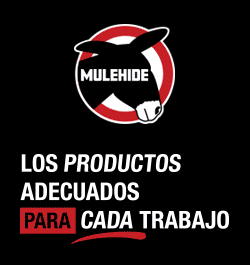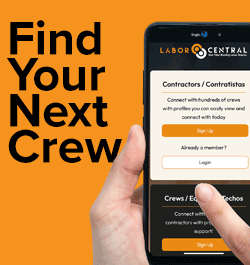Building compelling content through innovative management styles – Part 2

By Ingage.
Streamlining content management can avoid common communication issues and build a stronger content.
Part 1 of this series covered what content management is and how it can make your messages more effective. In Part 2, the experts at Ingage dive deeper into the process of content management and how to navigate it effectively.
It is important to remember that content management is not a foolproof route to getting your content published efficiently, rather it’s a guide to follow. It’s not just the creation process that may encounter roadblocks but also the management aspect. Overall, there’s no guarantee of fulfilling your client or audience’s expectations due to a variety of reasons.
Common issues with content management
User silos and lack of coordination
As more members of your organization join and gain access to your content management system, information silos can develop overnight. Whether through lack of communication, misinformation or even apathy, materials end up somewhere else within the CMS and not where they’re supposed to be.
The presence of silos can result in users being unable to move forward due to a lack of resources. Even worse, multiple individuals can inadvertently end up producing different versions of the same needed content.
This lack of coordination can lead to wasted resources, missed schedules and plenty of animosity. Even if this problem may seem simple enough to fix, it often becomes complicated when different groups insist on doing things “their way” for lack of an agreed standard.
Poor workflow
Producing content requires you to complete several specific steps, starting with planning and ending with going live. A proper workflow subjects all produced content to different validation, error detection and quality assurance processes.
Getting members to follow the workflow shouldn’t be a problem in small or medium-sized organizations. If you work in a large company, however, it can be difficult to get everybody on board. And if, by some miracle, everyone does sign off on the process, monitoring compliance remains a challenge. Getting different departments to follow submission schedules can also be equally frustrating.
For example, say an employee who’s tasked with reviewing a colleague’s content fails to accomplish it on schedule. They’ve just set off a chain reaction leading to delays. This can throw off the timing of carefully planned product campaign launches and cause your company to miss out on opportunities. Eventually, the entire team can suffer from low productivity, lackadaisical effort and an inability to adhere to schedules.
Missing documents and incompatible files
Another casualty of poor content management is the lack of an established filing system. As your team produces more and more content, files accumulate in your library and tend to get overlooked. While a CMS can help organize and manage files, it only follows the system that your organization will set.
If you’re the type who gets lost own in your own filing system, don’t blame the CMS. Instead, revisit your file maps to see how your system flows. Better yet, sit down with your organizational leaders and plan a more comprehensive system that makes sense for users.
In addition, the lack of established file formats can derail content publication schedules. Users might insist on submitting content in various formats outside of the agreed-upon ones. For creators, it will take additional time to convert image, video or audio files into accepted formats. Sending non-raw or high-quality files can also lead to content output with noticeable degradation due to additional compression.
Security and privacy issues
Granting all-access levels to most users opens up the possibility of data theft or privacy violations. When too many users are running around the CMS with clearance to copy, save or delete files, potential problems can crop up. For instance, inexperienced users might accidentally overwrite files or delete documents. Similarly, version control issues over multiple users making individual copies can leave editors scrambling to find a single source of truth.
Unfettered access to the CMS—especially on cloud-based systems—can also leave it open to cyberattacks. Malicious hackers who penetrate a poorly defended CMS can insert a worm or malware that can corrupt all files.
More alarmingly, many criminal groups have resorted to ransomware. Upon accessing a system illegally, they change all passwords and lock users from further access. Then, they demand payment to restore access. Otherwise, these nefarious groups will delete all files or render them unusable. Poor password management and loosely guarded systems are often the culprits for these vulnerability issues.

Unclear distribution strategy
One of the biggest fears for content creators is a lack of appreciation for their output. Marketers will spend thousands of dollars on campaigns and still fail to get enough views, let alone conversions. This problem may be because there’s no clear distribution strategy, which means you won’t be able to focus on targeted channels that can generate maximum exposure.
Distribution challenges can also expose limitations of your current CMS. Older, traditional content management systems usually favor a single channel (blog) and require additional time and effort to convert applicable content to other social channels. This drawback prevents creators from effectively using popular social media channels in a timely manner.
Why teams should streamline content management
Streamlining your content management system ensures that each piece of content receives its due attention and recognition. For marketers, nothing is worse than having an overabundance of material lying unused and idle, published in the wrong channel or ignored completely by an apathetic audience.
Conversely, getting your entire group aligned and involved in operating the CMS is integral to a streamlined operation. This goes beyond just coordinating tasks and schedules. Rather, aligning CMS operations will also require you to completely map out the content strategy and get everyone to buy into the workflow.
Better content means better engagement. Better engagement leads to improved trustworthiness and an enhanced reputation. Both attributes help increase the chance of getting customers to make that important purchase decision. Meanwhile, a better-informed sales team can utilize the resources found in the CMS to confidently pitch the right messages to clients.
Let’s look at some additional benefits for CMS-driven companies.
Improved sales and marketing partnership
Don’t underestimate the power of a well-aligned sales and marketing alliance. LinkedIn reports that when these two departments are joined at the hip, they tend to produce 208% more revenue than their dysfunctional counterparts.
Utilizing a CMS can effectively tear down the sales and marketing silos and make both teams play better together. This means marketers can create sales materials that reflect the views and input of sales representatives. In return, sales teams can deposit a treasure trove of experience dealing with customers in the CMS, giving marketers the resources they need to create more accurate buyer personas.
Additionally, collective CMS ownership also means increased collaboration when working on a single campaign. A well-constructed content repository can encourage joint planning, regular feedback and updates and a synchronized execution.
Effective content application
While the content management system can serve as an accessible location for sales resources, users need to determine the best ways to use the content. By mapping out your content locations based on campaign needs, sales team members can access not just marketing materials but also related resources. Materials include white papers, research papers, customer testimonials and demonstrations that attest to the effectiveness of products. This additional context can help bolster current campaign materials by adding authenticity and relevance.
Within the sales group, the content management system can also host first-hand experiences from top salespersons. These insights can help rookies and other sales reps gain knowledge on how to effectively pitch their products. Along with expert coaching and training materials, struggling sales team members will get valuable strategies and advice to improve their performances.
Better connections to customers on their preferred channels
It’s no secret that in today’s marketplace, buyers have the upper hand over sellers. Thanks to the internet, customers now have unfettered access to information that sellers once held exclusively. Instead of pining for the old ways, salespeople should embrace this new reality.
The best way to deal with this paradigm shift is to provide the information that will eventually turn up in customers’ research efforts. Controlling the flow of information and providing the needed resources can help herd consumers in your direction.
Aside from making your materials available for any interested parties, you should also be available to chat with customers on channels that they frequent. This means providing materials for the customer service staff handling product inquiries. It also means having your sales material available on the social channels your customers use.
By making these resources available for buyers—without them even asking—your chances of getting close to a deal can increase dramatically. Having these materials ready for deployment via your CMS is a great way to stay ready for anything.
Personalized messaging for specific customer segments
What’s worse than having no ready message for prospective customers? Sending a generic message that connects to nobody. Different buyer segments respond to different motivations, so it’s critical for sellers to make sure they’re sending the right messages to the right buyers. For instance, high-end clients won’t get excited over lower prices, while budget-conscious customers won’t care much for exclusive add-ons or upsell offers.
With the main marketing message stored securely in the CMS and readily accessible, sales reps can create personalized versions that target their specific customers. Plus, the accessibility and easy editing features of your CMS mean that sales reps can come out with tailored messages as quickly as possible.
Improved insights and feedback through analytics
Streamlining content management means listening to what your customers think and then applying the insights. Analytics is a great way to both measure customer sentiment and gauge your team’s sales performance.
- Are your messages going out in time for customers to appreciate them?
- More importantly, are you delivering the right messages to the right audience?
- Which messages resonate well with buyers, and which ones are getting ignored?
By applying analytics and reading up on the generated insights, your team can be forewarned and forearmed for the next round of campaigns.
Analytics can also play a bigger role in providing better overall content. By tracking audience movement within your platforms or channels, your CMS can determine if customers are responding to your marketing campaigns by staying engaged longer. In addition, analytics can track whether customers eventually gravitate toward a purchase decision or if they disengage after getting the information they want. Applying the lessons learned can lead to improved content creation and better site management.
Part 3 of this series will cover different types of content management systems and picking the right one for your company or project.
Original article source: Ingage
Learn more about Ingage in their Coffee Shop Directory or visit www.ingage.io.





















Comments
Leave a Reply
Have an account? Login to leave a comment!
Sign In